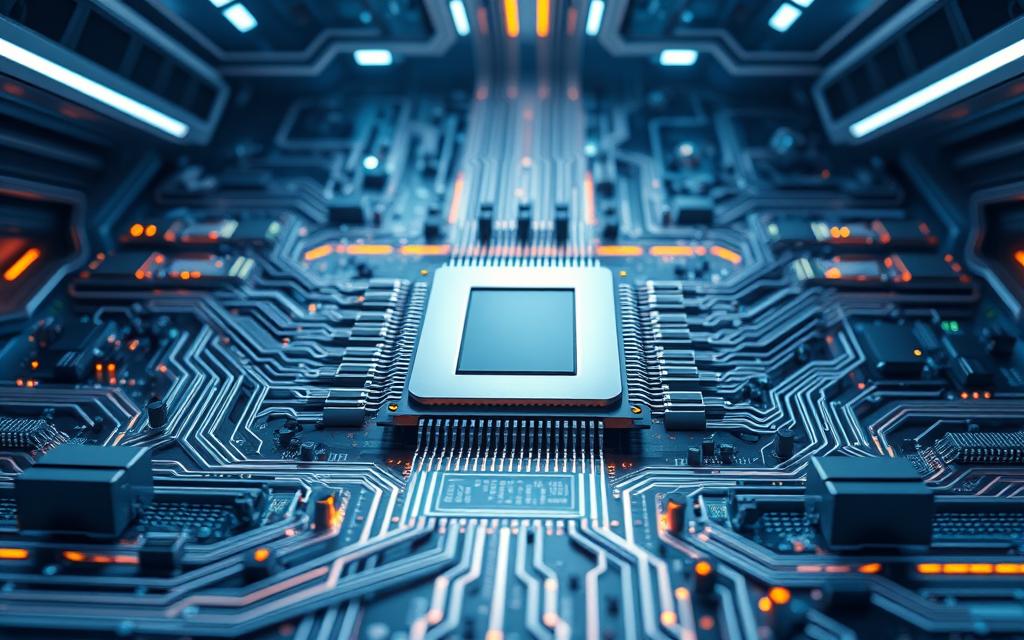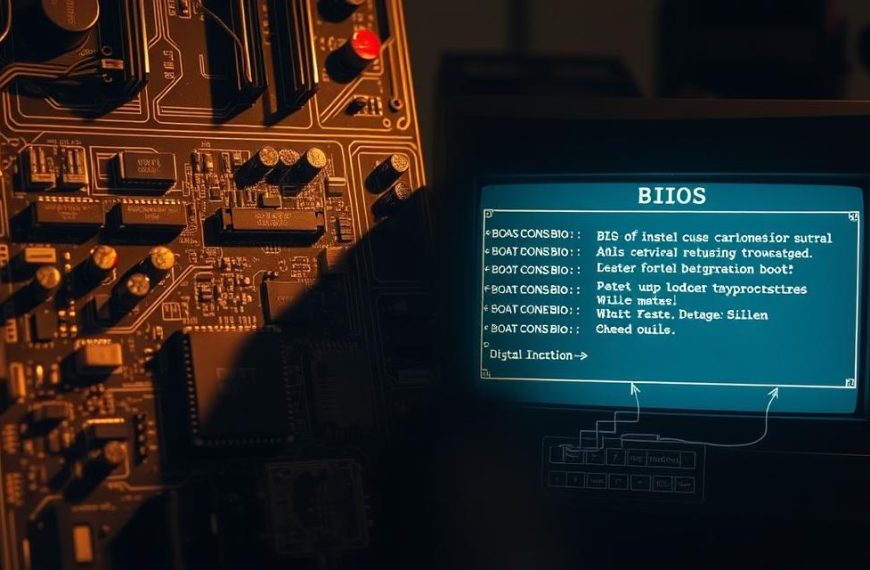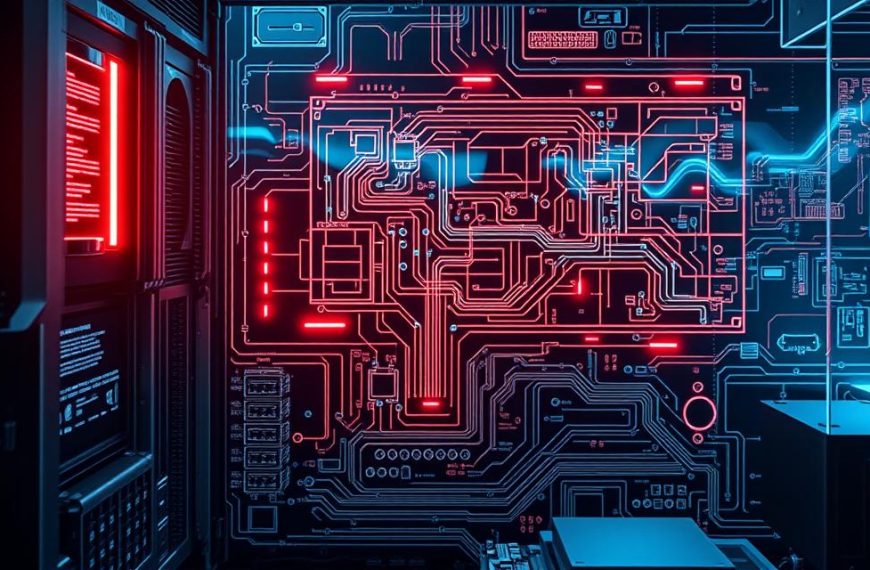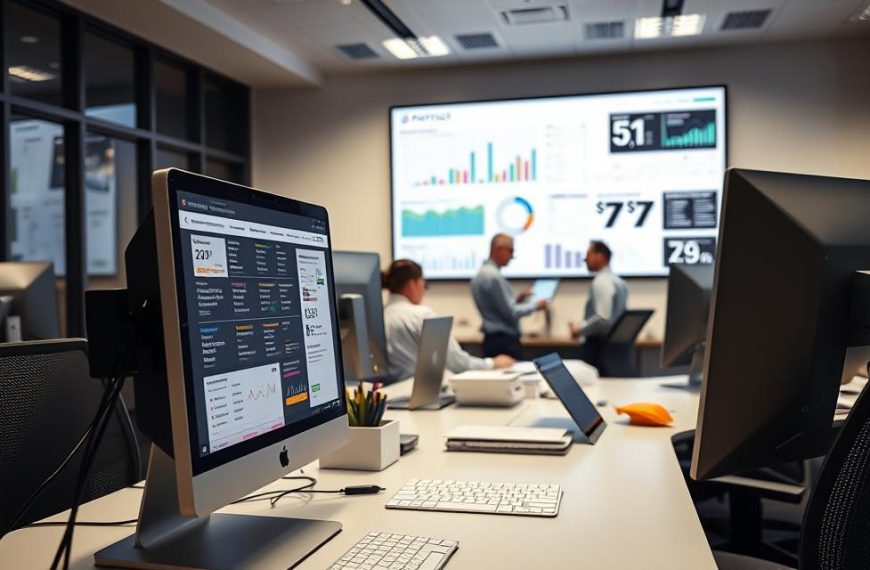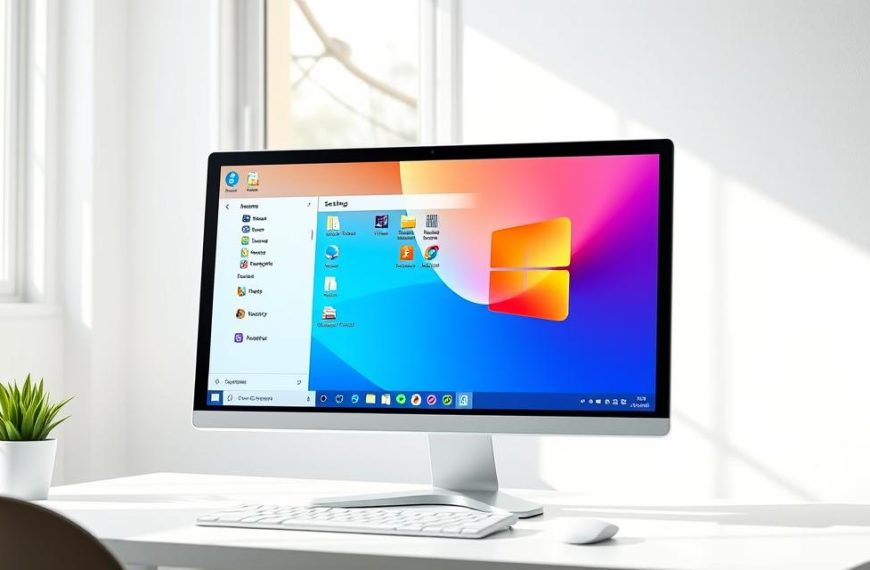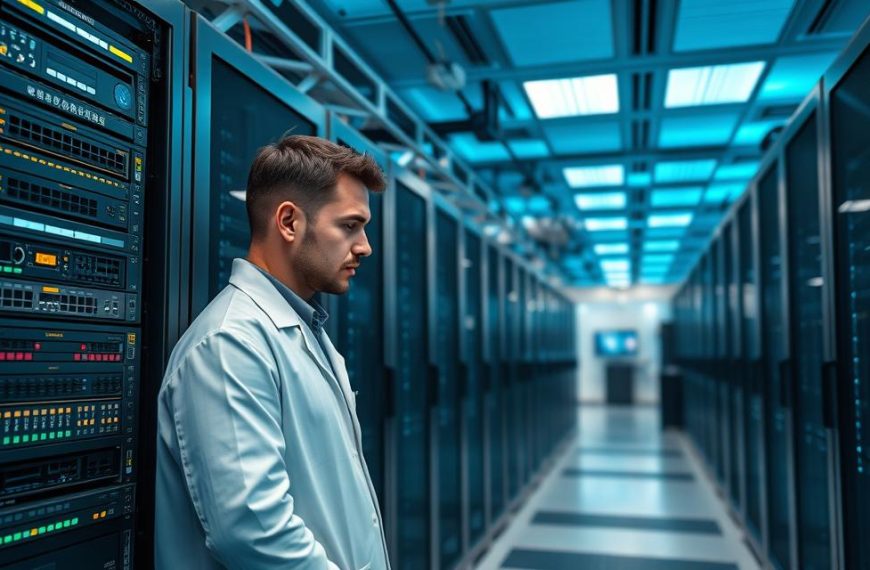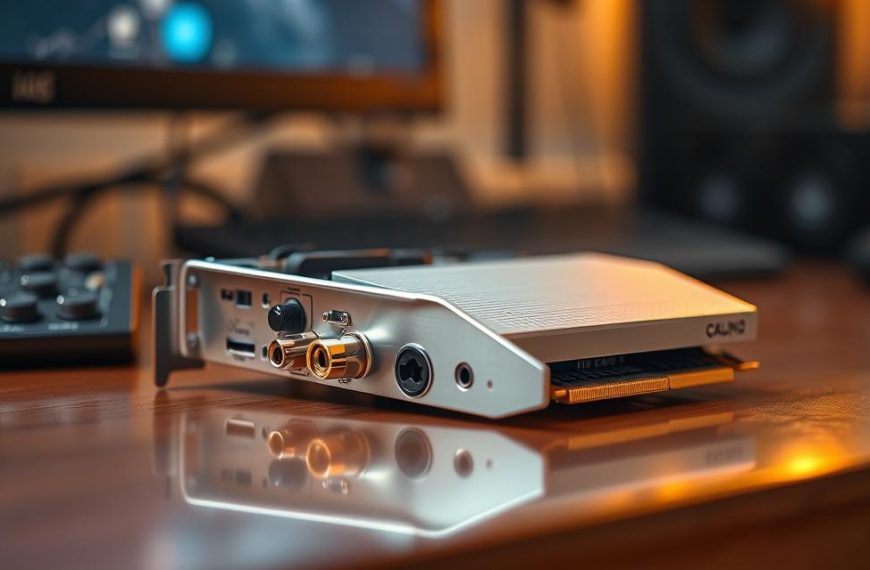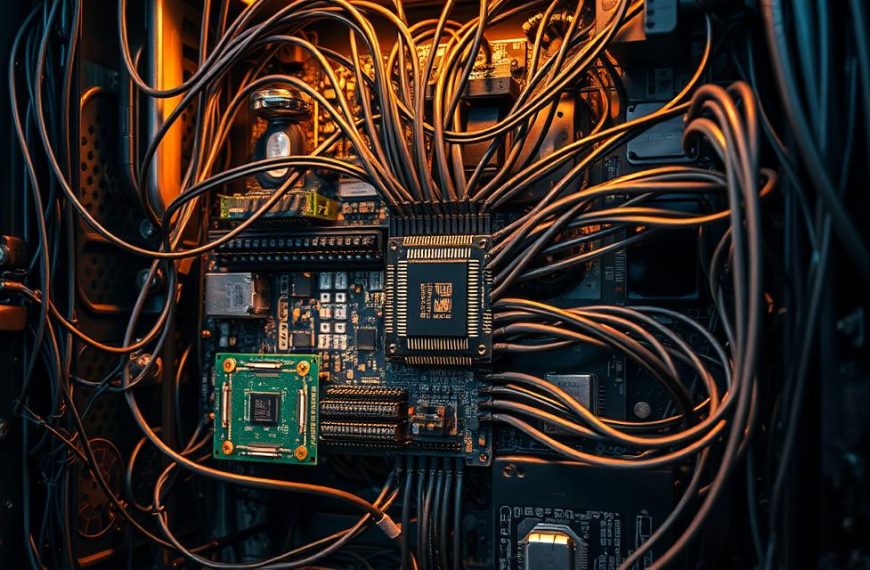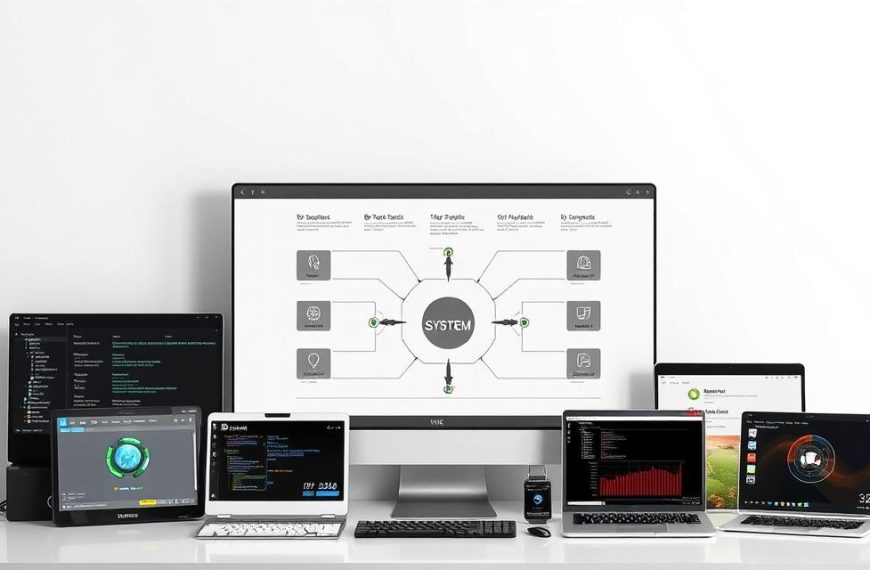Before electronic devices took over, people called ‘computers’ did math by hand. They were the first to do complex calculations, setting the stage for today’s advanced machines.
Charles Babbage and Alan Turing changed the game. Babbage’s idea of an analytical engine and Turing’s work led to electronic computational systems.
These systems mix hardware, software, and math. They are key to today’s digital computation in many areas.
They power everything from science to our daily tech. Knowing how they evolved shows their vital role in modern computing systems.
Defining Computational Systems: The Core Concept
A computational system is a complex mix of hardware and software. It follows programmed instructions to process information. These systems are key to modern tech, turning data into useful results through systematic steps.
Historical Context and Evolution
The story of computational systems started long before electronic computers. In the 19th century, Charles Babbage thought up the Analytical Engine. It was a mechanical device with memory and processing units. Though never built in his time, Babbage’s ideas shaped the future.
Alan Turing’s work in the 1930s was a big step forward. He showed that one machine could do any computer task with enough time and memory. This idea in computational theory helped create today’s programmable systems.
World War II sped up the shift to electronic systems. Machines like Colossus helped break codes. This was the start of electronic data processing systems that grew into today’s advanced tech.
Key Characteristics of Computational Systems
Today’s computational systems have key features that set them apart. These traits enable the complex tasks that drive modern tech in many fields.
Processing Capabilities
The core of any system is its ability to quickly and efficiently run instructions. Modern processors are fast thanks to parallel processing. This means they do many things at once, not one after another.
Instruction sets tell processors how to follow commands. Different systems use different sets for various tasks. This makes computational systems versatile and efficient.
Data Handling and Storage
Good data management is vital for systems. Memory is organised in a hierarchy based on speed and size. Faster memory works alongside larger storage for permanent data.
Storage has changed from punch cards to solid-state drives. Each step has made storage bigger and faster. Data organisation keeps information safe and easy to find, key for modern data processing systems.
These key features work together. They enable systems to handle complex tasks, from simple math to advanced AI. This keeps changing our tech world.
Essential Components of Computational Systems
Computational systems are amazing because of their mix of hardware and software. These parts work together to handle information and carry out tasks. They are the heart of modern technology. Knowing about these parts helps us see how computational systems turn data into useful results.
Hardware Elements: Processors, Memory, and Peripherals
The base of any system is its hardware. These parts are the core that makes things work.
At the heart is the processor. It’s like the brain of the system. CPUs do general work, while GPUs focus on graphics. Today’s processors have billions of transistors, making them super fast.
Memory is key for storing data. RAM is for quick access, while hard drives keep things for longer. This setup makes the system run smoothly.
Peripheral devices help the system talk to the outside world. They include things like keyboards and monitors. All these parts work together to make the system whole.
Software Components: Operating Systems and Applications
Hardware gives the system its body, but software is what makes it work. It’s all about the instructions and logic.
Operating systems manage the hardware. They sort out memory and schedule tasks. They make it easier for other programs to use the hardware.
Applications do specific jobs for users. They can be simple or very complex. They use the operating system to get the job done.
The mix of hardware and software is what makes a system work well. It’s all about finding the right balance. This balance is what powers everything from phones to big business systems.
Computational systems keep getting better. This is thanks to new ideas in hardware and software. This progress is what drives technology forward in all sorts of fields.
Types of Computational Systems in Use Today
Computational technology has grown into many forms for different needs. This shows how modern computing systems have changed to meet various demands. They range from helping individuals to powering big operations and everyday gadgets.
Personal Computers and Workstations
Personal computers are well-known for home and office use. They include desktops, laptops, and workstations for professionals.
Most personal computers use x86 architecture processors from Intel and AMD. These processors are good at balancing power and saving energy for daily tasks.
Workstations are more powerful than personal computers. They have stronger processors, more memory, and better graphics cards.
These systems are great for tasks needing lots of power. Examples include video editing, architectural design, scientific analysis, and software development.
Servers and Data Centres
Servers are key for business and internet services. They are different from personal computers in design and function.
Servers focus on being reliable, scalable, and always working. They have backup power, error-correcting memory, and cool systems.
Data centres are big places with many servers. They run cloud services, web hosting, and business apps.
Modern servers use ARM processors along with x86. ARM processors are more energy-efficient for certain tasks.
Embedded Systems in Everyday Devices
Embedded computing is everywhere today. These systems are built into devices for specific tasks.
Unlike general computers, embedded systems do one thing well. They are in smartphones, appliances, cars, and industrial gear.
Embedded systems use system-on-chip designs. This means they have processors, memory, and other parts all on one chip.
These systems aim for efficiency, reliability, and cost. They make devices smart, from thermostats to medical tools.
| System Type | Primary Function | Typical Processors | Common Applications |
|---|---|---|---|
| Personal Computers | Individual productivity | Intel Core, AMD Ryzen | Office work, content creation, gaming |
| Workstations | Professional applications | Intel Xeon, AMD Threadripper | CAD, video editing, data analysis |
| Servers | Service provision | Xeon, EPYC, ARM server chips | Web hosting, databases, cloud services |
| Embedded Systems | Device control | ARM Cortex, RISC-V | IoT devices, automotive systems, appliances |
Computational technology has evolved to meet many needs. From personal devices to big server systems and embedded computing, each type is designed for its role.
How Computational Systems Process Information
At the heart of every digital device lies a sophisticated mechanism for information processing. This fundamental capability transforms raw data into meaningful results through carefully orchestrated computer operations.
Understanding these processes reveals how computational systems achieve their remarkable capabilities. The journey from input to output involves both hardware execution and logical organisation.
The Fetch-Execute Cycle Explained
Central to all computer operations is the fetch-execute cycle. This continuous process drives how processors handle instructions and data.
The cycle begins with the fetch phase. The processor retrieves an instruction from memory locations specified by the program counter.
Next comes the decode phase. The control unit analyses the instruction to determine what operation needs performing.
Lastly, the execute phase carries out the actual computation. The processor performs the required action using its arithmetic logic unit.
This fundamental cycle repeats millions of times per second. It forms the backbone of all digital information processing in modern devices.
Role of Algorithms in Computation
While hardware handles execution, computational algorithms provide the logical framework. These step-by-step procedures define how problems should be solved.
Different algorithm types serve various purposes in information processing:
- Sorting algorithms organise data efficiently
- Search algorithms locate specific information
- Optimisation algorithms find best possible solutions
Algorithm complexity determines how computational resources are utilised. Efficient algorithms minimise processing time and memory usage.
Implementation transforms theoretical algorithms into practical software solutions. Programmers code these procedures using various programming languages.
Computational algorithms represent the intellectual foundation of information processing. They bridge human problems with machine solutions through precise logical structures.
Applications Revolutionising Industries
Computational systems are changing how industries work and compete today. They help organisations process lots of data, find hidden patterns, and make quick decisions. This change is seen in healthcare, finance, manufacturing, and more.
Artificial Intelligence and Machine Learning
Artificial intelligence is a big change in business today. Machine learning looks at past data to spot patterns and predict the future. It gets better with time, without needing to be told what to do.
AI helps in many ways. In healthcare, it spots diseases from images very accurately. In finance, it catches fraud right away. And in retail, it suggests products to customers.
The car industry uses AI for self-driving cars. It looks at sensor data to drive safely. Factories use AI to predict when machines will break down. These innovative applications solve big problems that people couldn’t solve before.
Big Data Analytics and Business Intelligence
Today, companies make a lot of data from many places. Data analytics tools look at this data to find important insights. Business intelligence turns this data into easy-to-understand charts for leaders.
Retailers look at what people buy to manage stock better. Telecoms check network data to improve service. Energy firms study how much power is used to balance supply and demand.
These tools help find new chances and ways to work better. Using data analytics well is key to staying ahead. Companies that do this well get better at making money and working efficiently.
Scientific Research and Simulations
Computational science has changed how scientists work. They use computers to simulate things that are hard or impossible to do in real life. This helps understand everything from tiny molecules to the universe.
Climate scientists use models to predict changes. Drug makers simulate how drugs work in the body. Aerospace engineers test planes in virtual wind tunnels, saving time and money.
Astronomy uses computers to find stars and planets. Materials science finds new materials through simulations. These advances in computational science have made finding new things much faster.
| Industry | Primary Application | Key Benefit | Example Technology |
|---|---|---|---|
| Healthcare | Medical Diagnosis | Early disease detection | AI imaging analysis |
| Finance | Fraud Detection | Real-time security | Machine learning algorithms |
| Manufacturing | Predictive Maintenance | Reduced downtime | IoT sensor analytics |
| Retail | Customer Personalisation | Increased sales | Recommendation engines |
| Research | Complex Simulations | Accelerated discovery | High-performance computing |
These technologies work together to make even bigger changes. AI helps with data analysis, and advanced analytics improve simulations. This mix of technologies is changing industries all over the world.
Evolution of Computational Power Over Decades
The journey of computational systems is one of humanity’s greatest achievements. It has moved from huge machines to invisible cloud services. This shows our endless drive for faster, more efficient processing.
From Mainframes to Cloud Computing
Early computers were massive and took up whole rooms. They needed special environments and teams to run. The 1970s brought minicomputers, making computing more available to businesses and universities.
The 1980s saw the rise of personal computers. This made computing power available to everyone. It was a big change, making computers common household items.
In the 1990s, client-server architectures emerged. This connected computers in networks, sharing resources and information. It led to the internet era, where computers worked together more than ever before.
Now, we have cloud computing. It lets organisations use computing power without owning hardware. This model is flexible, scalable, and cuts costs.
Impact of Moore’s Law on Development
Gordon Moore said in 1965 that transistors would double every two years. This became known as Moore’s Law. It has guided the development of semiconductors for over 50 years.
Moore’s Law has helped manufacturers plan for the future. It has also encouraged investors to fund new technologies. This has sped up innovation in the tech world.
This law has created a cycle of improvement. Each new chip has funded the next breakthrough. Today, smartphones have more power than old computers.
Now, engineers face big challenges to keep improving. They are looking at new ways to make chips smaller. This includes three-dimensional designs and special processors.
Despite these challenges, Moore’s Law keeps pushing innovation. The search for new ways to improve computing will keep going.
Challenges and Future Directions
Computational systems are evolving fast, but they face big challenges. These include security threats and sustainability issues. New technologies could bring big changes.
Security Concerns in Modern Systems
Today’s computers face tough security threats. Cyber attacks are getting more complex. They target weak points in networks and cloud systems.
Some major security issues are:
- Ransomware attacks on key infrastructure
- Data breaches that leak sensitive info
- Vulnerabilities in smart devices
To stay safe, companies need strong security plans. This includes using top-notch encryption, doing regular security checks, and training staff.
Sustainability and Energy Efficiency
The environmental impact of computers is a big worry. Data centres use a lot of electricity, which harms the planet.
To improve, we focus on:
- Using better cooling to save energy
- Powering data centres with green energy
- Making hardware more efficient
These steps help the planet and save money too.
Quantum Computing and Next-Generation Technologies
Quantum computing is a big leap forward. It uses qubits, which can be in many states at once. This is different from regular computers.
Quantum tech could solve big problems in:
- Finding new medicines
- Keeping data safe
- Optimising complex tasks
Big companies like IBM, Google, and Microsoft are working hard on quantum research. Here’s a comparison of old and new computing ways:
| Computing Type | Processing Method | Key Applications | Current Limitations |
|---|---|---|---|
| Classical Computing | Binary processing | General purpose tasks | Physical size constraints |
| Cloud Computing | Distributed processing | Scalable applications | Network dependency |
| Quantum Computing | Qubit superposition | Complex simulations | Extreme cooling requirements |
Quantum systems are not ready yet, but they’re the future. They can solve problems that regular computers can’t.
Conclusion
Computational systems are at the heart of our digital world. They have changed a lot, from old mainframes to today’s cloud systems. These systems are all about making information processing fast and efficient.
They work together, using both hardware and software, to handle complex tasks. This is seen in many applications we use every day.
Computational systems have a big impact on many areas. They help in artificial intelligence, scientific research, and business. They can handle huge amounts of data, changing how we work and communicate.
These systems come in all shapes and sizes. From small devices to big data centres, they meet different needs. This shows how flexible and adaptable they are.
Looking ahead, there are big challenges for computational systems. Security, sustainability, and quantum computing are key areas to focus on. We need to find new ways to make systems better and safer.
The future of computing looks exciting. New technologies like quantum computing will change how we process information. This will open up new possibilities in science, business, and society.
In summary, computational systems are key to our technological progress. They will keep driving innovation and change. This makes them vital for our digital world today and tomorrow.
